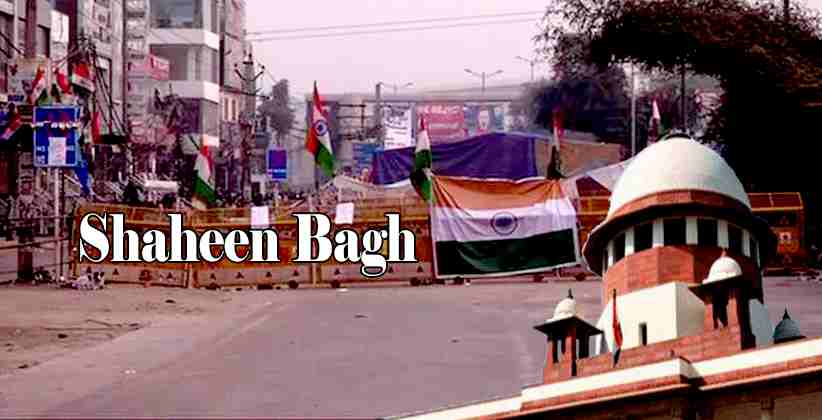
Shaheen Bagh in Delhi, the epicentre of the anti-CAA protests, has now come in the spotlight of the Supreme Court. The protest has been a peaceful sit-in, predominantly of women, demonstrating their dissent against the discordant policies of the BJP-ruled central government.
The top court had deferred the hearing against the peaceful protest considering Delhi elections saying, the court “will be in a better position by then”. The court said that it did not want to influence the election results in any manner.
The plea against the sit-in sought an answer from the court asking if people had unrestricted right to protest under Article 19 of the Constitution while violating other persons’ right to have a thoroughfare. “There is no quarrel with the proposition that everyone has a right to protest but the same is subject to reasonable restrictions, which can be imposed looking at the larger public interest,” the petition read.
While the petition stated that the protest is causing inconvenience to residents, children, patients, the protest gathering is known to have made way for school buses and ambulances.
The court had asked petitioners to show cause at the Monday hearing to state why the matter should not be remitted back to the Delhi High Court. At the Monday hearing, the court held that people are entitled to protest but should do so in an area designated for agitation and not cause inconvenience to others. One of the contentions raised against the petition was by the counsel of Bhim Army Chief Chandrashekhar Azad who said that it was a question of balancing rights. This contention was however, dismissed by the court saying, “Protests can’t be anywhere someone wants..you can’t do that even in a park…Protests can happen only in an identified area.”
An infant and a protest
In the same hearing, the court also took cognizance of a letter by a 12-yr-old National bravery award winner following the death of a 4-month-old infant allegedly due to exposure to cold as he was taken to the venue of the anti-CAA protests at Shaheen Bagh.
A counsel appearing on behalf of some mothers from Shaheen Bagh said as per UN convention ratified by India, children have a right to protest. To this, CJI SA Bobde asked “a four-month-old went for protest? How can mothers support this!”
The Chief Justice was surprised on how a mother can take a 4-month-old for a protest while it chose to not act when students at universities were being shot at and assaulted, also when minors were detained in police custody with reports of alleged sexual assaulted. While the apex court has chosen to be selective in its cognizance of the several issues that have cropped up from December 2019 until now, many are of the view that the top court had failed in upholding human rights considerably.
The court also issued notice to the Centre, Delhi Government and police and set the next hearing date for February 17, 2020.
Before the hearing in January, the protestors fasted and wrote post cards to CJI S.A. Bobde explaining their predicament.
Delhi High Court’s view
The matter was initially placed before the Delhi High Court, whereby the court had entertained a PIL seeking a direction to lift traffic restrictions in Kalindi Kunj-Shaheen Bagh and the Okhla underpass where the protests are ongoing. The PIL was disposed of by a bench comprising of Chief Justice D.N. Patel and Justice C. Hari Shankar saying the police had the “power, jurisdiction and authority to control the traffic, wherever protests or agitations are going on, in the larger public interest”. The court had further held, “We hereby direct the concerned respondent authorities (police) to look into the grievances ventilated by the petitioner in this writ petition… about the restrictions on usage of the road… and will react in accordance with the law, rules, regulations and the government policies applicable to the facts of the present case.” The Court had directed the police to keep in mind the larger public interest as well as maintenance of law and order.
The outcome of these petitions at the Supreme Court may come in favour of the petitioners leaving the longest running 24/7 protest in India curtailed, which will eventually put a nail in the coffin, in which lie our democratic principles. A legal perspective certainly says that a public road ought not to be obstructed for this long as, if seen from point of view of “public good”. As the hearing proceeds, one will see whether the court upholds “Salus populi suprema” (Welfare of people is supreme) in favour of the people who are protesting or in favour of the public who are inconvenienced by a protest that has become an epitome of our democratic rights.